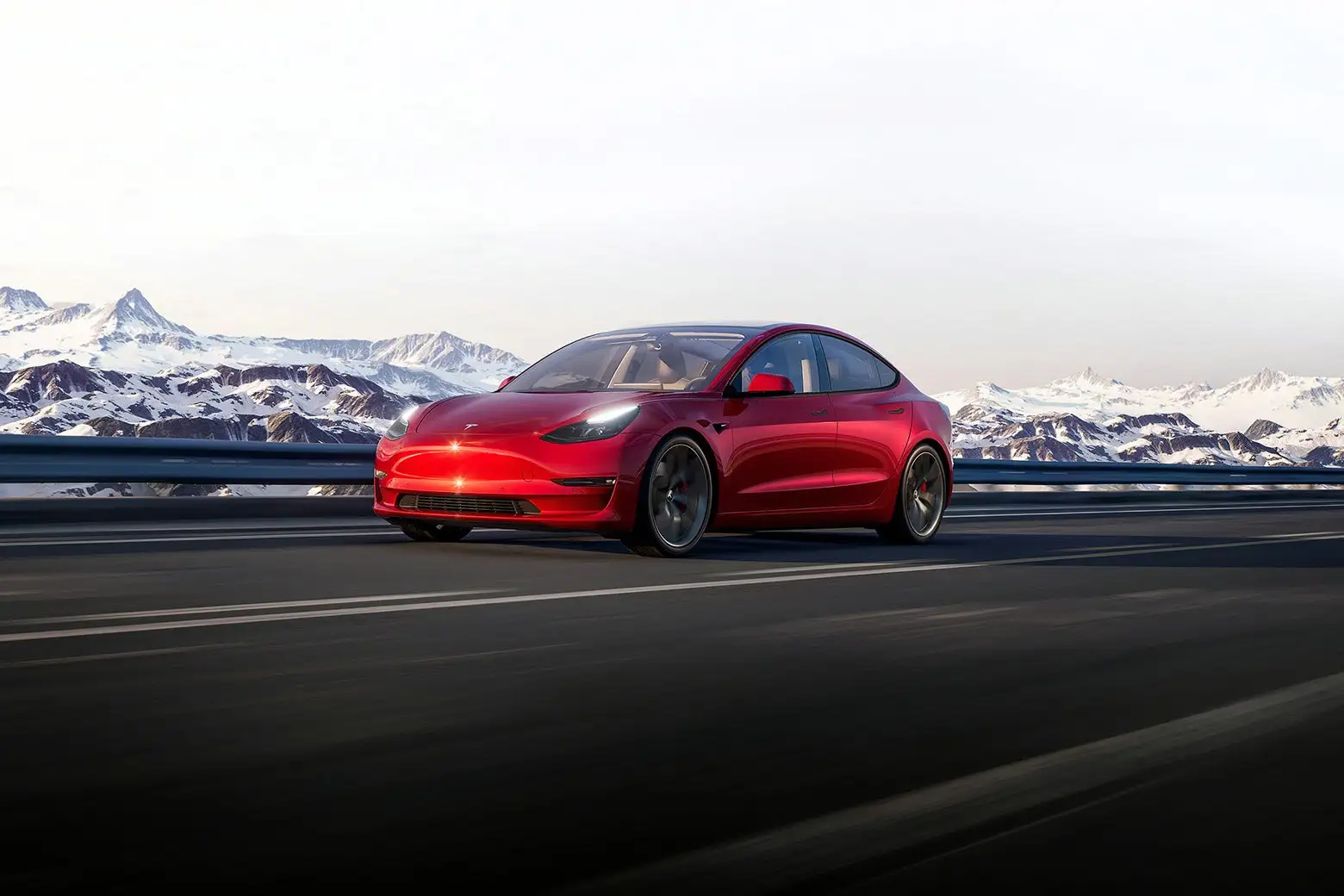We were easy marks.
Not a Tesla apologist, but this article kind of contradicts itself.
They argue that Tesla is lying about vehicle range, but then saying that Tesla is guilty of normalizing building vehicles with oversized batteries which customers don’t need (because they only drive 40 miles a day) which is putting a strain on the battery supply chain.
Wouldn’t Tesla lying about range be them minimizing their impact on the battery supply chain?
And the rest of the article goes on to complain about the battery arms race which I agree with (anybody who can charge at home doesn’t need more than 100 mile range for their second vehicle), but that’s hardly Tesla’s fault. On every thread discussing EVs for the past 10 years, there’s always some petrolhead complaining that EVs aren’t able to easily complete the 15 hour, 900 mile, road trip they apparently drive every week. The market wanted a replacement for gas cars, Tesla did what they could to meet that demand.
Also, the articles linked about Tesla lying about range mostly discuss how all EVs fall short of EPA range when tested by Car and Driver. That suggests the blame lies with EPA testing, and Car and Driver even has a suggestions on what to change about the EPA’s methodology.
Wouldn’t Tesla lying about range bee then minimizing their impact on the battery supply chain?
Not at all, they’re still stuffing their cars with lots of big batteries, and then lying about the range those batteries give.
But if they wanted to actually meet their claimed range, wouldn’t they need even bigger batteries?
If the point of cheating on range estimates is to trick consumers into accepting smaller batteries with lower range, is that not exactly what the author would like to see happen?
No, because the author wants honesty. They’re still packing more batteries than these vehicles need, which is a problem.
The science says they are packing more batteries than the vehicle needs, but the consumers say otherwise.
All manufacturers, Tesla included, consistently find their long range versions significantly outselling the short range ones.
In Tesla’s case it got to the point where demand for short range versions was so low, it was cheaper in some cases to only make larger range versions and limit the range with software. Rather than maintaining multiple production lines.
In the late 90s GM’s made the first moderately popular modern production electric car in North America. The initial version had a 55 mi range on traditional lead acid batteries (when measured using the 2019 EPA standard protocol, it was advertised as having a 78 mi range using the protocol at the time). That was enough range to meet the daily driving needs of 98% of the population. They tried selling it with the message that’s enough for your needs, it didn’t sell well. Later versions used NiMH batteries and had almost twice that, it still wasn’t a big seller.
Both then and still today, the lowest range EVs from all manufactures, which have at least double the original EV1 range, consistently and significantly undersell the longer range models because consumers think they need to have hundreds of miles of range so that they can take the occasional unplanned road trip.
The need to significantly over-provision the range on an electric vehicle is due to consumer demand not misleading marketing.
Your story with GM is… false. It’s just false.
People were literally lining up at dealers trying to buy the EV1. Their waitlists overflowed.
GM produced that car because of the California Zero Emissions Vehicle mandate (which yes, existed in the 90s). But they didn’t quietly roll over and accept the mandate, they also, in parallel, mounted huge legal and astroturf battles against the law.
Which were successful. The law was killed. And what did GM do with their backstock of vehicles? Did they go down those waitlists and sell off the fleet? No, they packaged them onto car carriers with people literally camped out at dealers to buy them, watching and crushed them.
They had a successful plan to sell profitable EVs that people wanted. It wasn’t nearly as profitable as selling ICE vehicles, but they knew the changing regulatory structure in CA would change that and hedged the bets. But also invested heavily in killing that regulatory change, and the moment they did, they intentionally killed the car to stop more consumers from having and liking them.
Wagoner has said the biggest mistake he ever made as [GM] chief executive was killing the EV1, GM’s revolutionary electric car, and failing to direct more resources to hybrid gas-electric research.
PS: they joined the 2019 Trump lawsuit to fight new CA emission standards.
Both things aren’t great. Both neither excuses the other.
They shouldn’t lie about their battery range. Full stop.
They shouldn’t overstuff the car with unnecessary and environmentally costly batteries, but as stated above, there’s some market force here as well.
These two things really have nothing to do with each other. They’re independent situations that exist whether the other does or not.
They shouldn’t lie about their battery range. Full stop.
Agreed, but the article isn’t really making the case that they‘re even doing that.
The linked articles: https://www.caranddriver.com/news/a43657072/evs-fall-short-epa-estimates-sae-article/
https://apnews.com/article/technology-electric-vehicles-21622a87f9dbbc5e29c05bc414442142
https://www.autonews.com/mobility-report/heatwave-reduces-range-some-evs-31
Are not about Tesla.
Even the article about getting fined in Korea is about them failing to advertise cold weather impact on performance, which again affects all EVs.
They go on to complain about how a software update reduced battery range. If you look into that update, it’s simply adding a diagnostic that detects a very real battery fault. People have taken apart packs with the BMS_u029 error and found dead cells that could catastrophically fail. It’s effectively a dead pack, and on a 10 year old car, I t’s unfortunate, but bound to happen to some people.
And the other software killing range issue was a single event where Tesla accidentally unlocked extra range on a battery that the user didn’t pay for. The software update “fixed the glitch,” but they ended up unfixing it for free anyway.
This article is a biased hit piece that fails to even address what its headline lays out.
anybody who can charge at home doesn’t need more than 100 mile range for their second vehicle
Wow way to throw nuance and individual needs totally out of the window.
Do you even take yourself seriously?
Sorry, “most people”.
50% of Americans live in detached housing and could fairly easily get a home charging set up. Of those Americans who own more than one vehicle, I would assume that they rarely need to drive both vehicles over a long distance since I’m assuming that most families can fit into one car.
100 miles is more than enough for the average 30-40 mile American commute, but obviously not enough for a road trip.
Sorry for the oversimplification. I’m mostly reacting to many EV detractors who want to replace their 2-3 350 mile range ICE vehicles with what they see as equivalent 350 mile range EVs when the use case (as this article points out) is entirely different.
I personally own a 300 mile range EV, and I rarely use more than 20% of its battery in a day.
You also gotta remember things also get more complicated when it gets cold. Suddenly that 40mile commute can become problematic in sub zero temperatures. Maybe you could make the trip but now you can’t do those after work errands or whatnot.
A commuter car with 125-150mile range might be more practical as a 2nd car.
Unless it’s an LFP car you’re not supposed to consistently use top/bottom 10-20% either reducing range if you dont want to shortern its lifespan, but LFP perform worse in cold weather so again, 100miles probably isn’t enough for that use case for a substantial amount of people in colder climates
Edit: I checked a random website and it had 25 US states with a average winter temperature below freezing temperatures. Not considering other places like Canada or Europe either.
FWIW I also own a long range EV, but I would definitely consider a shorter range one for 2nd vehicle, and use the long range one for our trips. We wouldn’t have a use for 2 long range ones.
, and supply chains aren’t scaling anywhere near fast enough to put a 300-mile range EV in every driveway in time to slow climate change.
And if they were scaling we would just accelerate climate change even more. New cars don’t slow climate change. Repair your old one, or take the bus, or use a bike.
Should really be converting all cars to ev. Then when they all break move to lighter and better suited evs
So, pile a pile of trash on top of a pile of trash on top of a pile of trash? Yup, that’s gonna save lots of resources and energy.
What are you trying to say ? Can you say it with more words ?
@stopthatgirl7 Perhaps it’s time that people accepted that Toyota was right: We want a diversity of electrified vehicles. Hybrids, plug-in hybrids and fuel cell cars all have their role to play right now. It should not be a monoculture of BEVs.
No one is stopping any country or company from producing fuel cell cars. If Toyota is right, where are the fuel cell corollas?
I am not knocking fuel cell vehicles, I wish they were viable but after 20 years of R&D they still haven’t solved the H2 storage problems, and it is starting to look like it will never be practical for a vehicle the form factor of a car.
They started selling fuel-cell cars last year. Both Toyota and Hyundai sell hydrogen-powered cars. https://www.hyundaiusa.com/us/en/vehicles/nexo and https://www.toyota.com/mirai/ So they do exist. They are actively on the road. You may purchase one at your convenience.
Last year? The Mirai went on sale in 2014, the Nexo in 2018. Just nobody buys them because there are no fueling stations, and there shouldn’t be any for their horrible inefficiency anyway.
Where were BEVs just 15 years ago? These things do not happen all at once. Most arguments against fuel cell cars are outdated and from people stuck in the past.
Where were BEVs just 15 years ago?
Where are fuel cells today?
I read my first story about the coming fuel cell cars in 1996, and they were less than a decade from production then, but they never came.
Toyota, the builder of some of the best cars ever made, has spent decades and billions trying to make fuel cells work for cars. If a company with the engineering excellence of Toyota is struggling for so long…
BEVs are not on the road because they are better than fuel cells. If fuel cells could be practically made, they would beat BEVs in every aspect. Range, refuelling, environmental impact
But they don’t.
BEVs are not better than fuel cells but they actually work for cars.
BEVs are over 100 years old. In fact, they’re older than ICE cars. No one seems to notice that this is the longest development process of any technology in the industry.
Meanwhile, fuel cells are just coming into their own. Most of your arguments are just totally outdated and stuck in the past. You seem oblivious to the fact that FCEVs already exist and are being sold to the public right now. They’re already a developed technology, just one that hasn’t become popular yet. It is likely dismissing solar and wind energy just as they were taking off. It is just being closed-minded and short-sighted to say these things.
Meanwhile, fuel cells are just coming into their own.
Fuel cells were invented in 1839. What are you talking about? Fuel cells are also widely used in backup generation, and on-site power generation for large consumers of electricity. I’ve even visited an EV charging station powered by natural gas fuel cells.
Batteries are an even older idea. As a technology that can power vehicles, fuel cells are coming in their own now.
The first real device we’d call a battery was from 1800. So a 38 year head start. The technology of fuel cells isn’t the issue with them, it’s the fuel part. Well, that and the catalyst plates. But that’s not exactly rocket science to rebuild a fuel cell when the catalysts need refurbishment.
the biggest hindrance to hydrogen is the cost to build a hydrogen station vs out in ev chargers. why would anyone build a hydrogen station when they could install many ev chargers for the same price. maybe trucking and busses, like greyhound not metro or school, could be a usecase for hydrogen going forward.
It’s cheaper to install hydrogen stations than it is to build charging stations. That’s because it cost 10x less to move hydrogen around compared to electricity.
https://www.brinknews.com/could-hydrogen-replace-the-need-for-an-electric-grid/
Across all 111 planned new hydrogen fueling stations, an average hydrogen station has capacity of 1,240
kg/day (median capacity of 1,500 kg/day) and requires approximately $1.9 million in capital (median
capital cost of $1.9 million).https://www.hydrogen.energy.gov/pdfs/21002-hydrogen-fueling-station-cost.pdf
Most commercial enterprises look to install level two charging stations, which run on 240-volt power and provide a compromise between power and cost. A level two electric vehicle charging station costs around $2,500 for a non public facing and $5,500 for a public facing dual-port station—it can charge two cars simultaneously in eight to 10 hours.
https://futureenergy.com/ev-charging/how-much-do-ev-charging-stations-cost/
As more drivers purchase plug-in electric vehicles (PEVs), there is a growing need for a network of electric
vehicle supply equipment (EVSE) to provide power to those vehicles. PEV drivers will primarily charge
their vehicles using residential EVSE, but there is also a need for non-residential EVSE in workplace, public,
and fleet settings. This report provides information about the costs associated with purchasing, installing,
and owning non-residential EVSE. Cost information is compiled from various studies around the country, as
well as input from EVSE owners, manufacturers, installers, and utilities. The cost of a single port EVSE unit
ranges from $300-$1,500 for Level 1, $400-$6,500 for Level 2, and $10,000-$40,000 for DC fast charging.
Installation costs vary greatly from site to site with a ballpark cost range of $0-$3,000 for Level 1, $600-
$12,700 for Level 2, and $4,000-$51,000 for DC fast charging.https://afdc.energy.gov/files/u/publication/evse_cost_report_2015.pdf
or its cheaper to install ev chargers.
More stations more greater economies of scale. At some point this will be no more expensive than a gas station. Also, you have a much greater capacity per station compared to a charging station. It will pencil out to being cheaper than building the much greater number of charging stations. Not to mention maintenance. The cost of maintaining millions of charging stations will be a major challenge.
im no business major but even i can see its a no brainer to go with an 38 ev chargers vs 1 hydrogen station. and the same economies of scale will make it cheaper to build more ev stations cheaper. hydrogen may have a place, trucking and busses like greyhound might make sense for hydrogen but currently it makes no sense to build a hydrogen station for normal passenger vehicles.
it cost 10x less to move hydrogen around compared to electricity.
Moving electricity around only requires aluminum wire and transformers. Incredibly cheap. Moving hydrogen around requires either roads and trucks (already more expensive than high voltage AC transmission) or a pipeline that won’t leak hydrogen plus training for emergency response (also more expensive than high voltage AC).
Steel pipes are even cheaper. You are just regurgitating pro-BEV talking points. It is much cheaper to move hydrogen around than electricity.
But it isn’t just steel pipe. It’s steel pipe precision welded and leak checked, buried under ground, with lots of continual maintenance, pump stations to increase pressure, control systems, etc. More expensive even than natural gas piping, which is already difficult to get installed with municipalities frequently rejecting it for safety reasons.
We’ve been back and forth on this countless times over the years, you and I, but you keep coming back to these same points. None of which are correct. BEVs use existing infrastructure, and while they are NOT the best solution, they are the best solution people are going to choose. You’re flat out not going to get someone to pay more for hydrogen than they would for any any other fuel, producing the hydrogen isn’t as energy efficient as charging a battery, and installing an H2 station is significantly more expensive than installing even a DCFC station with four or six stalls and all the complimentary transformers necessary.
I have a photo of GM’s fuel cell test vehicle driving on the highway from 2009, some 14 years ago. Most of the arguments against fuel cells are the cost and complexity of hydrogen, and the logistics of getting it around any given country. Those are not outdated, they are absolutely as true today as they were 15 years ago.
GM made a BEV back in the 1990s. They did a lot of things long before they were ready. The point you are missing is that cost is rapidly coming down. An FCEV will be no more expensive than an ICE car to make. People who continue to repeat the “high-cost” argument are just stuck in the past. A total repeat of what people said of BEVs too.
Let’s grant your point about prices coming down, and let’s say that a fuel cell, a small battery, and the fuel tank(s) is the same price or even cheaper than a BEV. Let’s just take that as completely granted.
How about the cost of energy per kWh? Hydrogen is much more expensive than just buying the electricity. In Norway, right now, price of H2 is 195 NOK/kg or about $19.13 USD per kg. 1kg of H2 is 33.33 kWh, meaning it’s about $0.574 USD per kWh for hydrogen. Even the most expensive DCFC don’t sell for that price. Here in the US, the production costs alone, as reported by NREL, are well above the cost of traditional fuel and electricity based on using methane cracking with steam assuming we can make that commercially viable. Cracking the methane is much more expensive than just burning it to produce electricity, and that doesn’t account for increasing nuclear or renewable energy sources on the grid.
On a per-kWh basis, a hydrogen fueled car will necessarily be more expensive to refuel than a BEV, while battery costs continue to decrease just as fuel cell costs have.
I’m definitely no battery engineer, so correct me if I’m wrong, but… wouldn’t a 100-mile-range battery pack have a shorter life span than a 200-mile pack under the same usage since its charge/discharge cycles would be deeper in terms of %, and possibly more frequent because of the reduced range?
Yes, this is kind of true. But how you use the battery is also important. If you frequently DC fast charge your pack, it will wear out significantly faster than using Level 1 (120V AC) or Level 2 (240V AC) charging. This is because DCFC pushes the boundaries of how much current the battery can safely take in order to reduce the amount of time it takes to charge the car. It’s a balancing act between customer acceptability and limiting battery degradation.
Slate froze the screen because I use an ad blocker. Oh well. Buh bye slate.
We were easy marks.
People are simps for their billionare overlords











